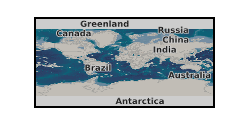Excel
Type of resources
Available actions
Topics
Keywords
Contact for the resource
Provided by
Years
Formats
Representation types
Update frequencies
Resolution
-

Simplified reservoir models are used to estimate the boundary conditions (pressure, temperature and flow) that are relevant to the primary aims of this project. A set of boundary conditions are defined at the wellhead that represent the behaviour of the store. Data relates to publication: Sanchez Fernandez, E., Naylor, M., Lucquiaud, M., Wetenhall, B., Aghajani, H., Race, J., Chalmers, H. Impacts of geological store uncertainties on the design and operation of flexible CCS offshore pipeline infrastructure (2016) International Journal of Greenhouse Gas Control, 52, pp. 139-154. https://www.scopus.com/inward/record.uri?eid=2-s2.0-84978197316&doi=10.1016%2fj.ijggc.2016.06.005&partnerID=40&md5=d567f0e06f561613554a1f1c2e230194 DOI: 10.1016/j.ijggc.2016.06.005
-
This dataset consists of palaeoecological measurements taken at sites in the Peak District and NW Sutherland during the NERC Rural Economy and Land Use (RELU) programme. This data collection includes the results from four interlinked projects combining quantitative and qualitative evidence to assess long-term ecological data at local to national levels: Project 1 synthesises existing information on historical environmental changes in the uplands with relevance to current management and policy Project 2 used high resolution palaeoenvironmental analyses to reconstruct ecological changes and land-use histories of four contrasting moorland systems in the Peak District (England) over the last c.200-1300 yrs. Sites were selected in consultation with stakeholders and the results provide the basis for comparison with ecological survey results and knowledge of current managers. Project 3 used similar methods to reconstruct ecological and land-use changes in NW Sutherland (Scotland) over the last c.400 yrs. Site selection was based on discussion with stakeholders and results were compared with stakeholder knowledge and preferences for landscape change. Project 4 used three choice experiments to assess the response of different communities to long-term evidence as a potential source of information to inform preferences for upland management. Project 4a used a choice experiment to assess the influence of long-term evidence on management preferences of residents of the Peak District. Project 4b used choice experiments to present long-term evidence to ecologists from government, NGO, research and practitioner communities in conjunction with established sources of ecological evidence used in upland management (ecological monitoring and ecological research) and with stakeholder preferences for upland management, since this is increasingly becoming embedded in decision-making. The upland woods and peatlands were used as the contexts for two choice experiments. This dataset consists of palaeoecological measurements taken at sites in the Peak District and NW Sutherland, as part of projects 2 and 3 as listed above. The choice experiment data from this study are available at the UK Data Archive under study number 6791 (see online resources). Further documentation for this study may be found through the RELU Knowledge Portal and the project's ESRC funding award web page (see Supplemental).
-
This dataset consists of tick sampling and microclimate data from Exmoor, Richmond and New Forest study sites; as well as ARCGIS risk maps that model tick abundance driven by climate surfaces and host abundance. Tick sampling data (91 files, each representing a day of sampling) indicate tick abundance (distinguishing larvae, nymphs, adult males and adult females), vegetation height, soil moisture, temperature and relative humidity. Static risk map files indicate modeled tick abundance: 251 landcover files for the three sites, as well as 36 ArcView map files. The study is part of the NERC Rural Economy and Land Use (RELU) programme. Many people take pleasure from activities in forests and wild lands in the UK and others are being encouraged to participate. Unfortunately, there are risks and one of the most insidious is the possibility (albeit tiny) of acquiring a disease from wild animals; for example, ticks can be vectors of the bacterial infection leading to Lyme Disease. Both diagnosis and treatment can be problematic so prevention of acquiring such disease is highly desirable. Surprisingly little is known about how best to warn countryside users about the potential for disease without scaring them away or spoiling their enjoyment. Answering such questions was the goal of this project, and required the integration of a diverse set of scientific skills, and an understanding of the views of those who manage countryside, those who have contracted zoonotic diseases and those who access the land. This project combined knowledge from three strands of work, namely risk assessment, risk perception and communication, and scenario analysis. The study sites were selected to provide a range of environmental conditions and countryside use. Peri-urban parkland, accessible lowland forest and heath and remote upland forest were chosen as represented by Richmond Park on the fringe of Greater London, the New Forest in Southern England, and Exmoor in South West England. The following additional data from this same research project are available at the UK Data Archive under study number 6892 (see online resources): Lyme disease risk perception data resulting from tick imagery vignette experiments, Lyme disease patient interviews and surveys, residents and countryside staff focus groups, forest manager interviews, and multiple scoring procedures of animal social representation; as well as Lyme and tick risk communication data resulting from interviews with organisations and content analysis of risk warning information leaflets, Further documentation for this study may be found through the RELU Knowledge Portal and the project's ESRC funding award web page (see Supplemental).
 NERC Data Catalogue Service
NERC Data Catalogue Service